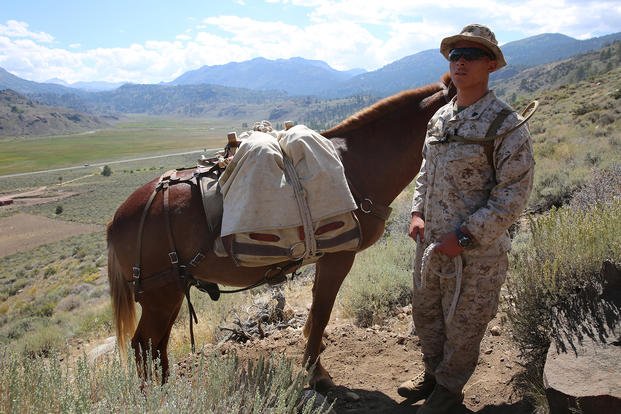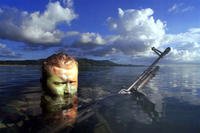MOUNTAIN WARFARE TRAINING CENTER, Calif. -- The MWTC near Bridgeport, California, has begun teaching an advanced horsemanship training course to teach Special Operations Forces (SOF) personnel the necessary skills to enable them to ride horses, load pack animals and maintain animals for military applications in remote and dangerous environments.
"We're taking this course so that we can integrate irregular warfare into the Marine SOF horsemanship program," a SOF veterinarian assigned to U.S. Marine Corps Forces Special Operations Command (MARSOC) said. "As vets, we can help educate the Marines and other SOF on these matters. It's a very unique course because it combines the conventional warfare tactics of the Marine Corps with the irregular warfare used by SOF."
The course is designed to aid small specialized units in operating with indigenous personnel who ride and/or pack animals. This includes riding horses and packing animals for transporting weapons, ammunition, supplies and wounded personnel to and from terrain that is inaccessible to mechanized and air mobile transportation.
"We teach Marines how to use pack animals and riding animals as a means to transport people and supplies when ground vehicles or air support isn't possible," said Anthony Parkhurst, director of the animal packing program, from Indiana. "Even though we use mules and horses here, the course teaches principles that can be used on any pack animal; camels, llamas and donkeys can be used, depending on the environment."
Other course subjects included animal care, anatomy of working animals, animal packing techniques, casualty evacuation techniques, animal first aid, bivouac considerations and horsemanship techniques as well as capabilities of the different animals.
"A typical pack animal weighs 800 to 1,000 pounds and can carry one quarter to one third its body weight. Of course the best pack animal is still a Marine, since they routinely carry more than half their body weight," laughed Parkhurst, who retired from the Marine Corps and speaks from personal experience.
The Marine Corps quit using pack animals in 1953. In 1983, the course to use pack and ride animals began again as the Defense Department started a program to test the value of pack animals. Originally the program was only to last three to five years, but the success of the course resulted in its continuation at MWTC. The program taught at MWTC is currently the only one of its kind in the DoD.
The course simulates the difficulties of mountainous terrain. The training is essential to help Marines and other military members understand the capabilities of the animals and the influence and considerations of terrain and climate. For many of the Marines, this is a unique experience and something different than the normal type of infantry training.
The factors that can dictate the use of pack animals vary; many countries have terrain without roads or otherwise impassable with motor vehicles. Countries that have heavy rain may make many roads impassable.
While almost any animal can be trained to pack, the Marine Corps uses nine basic pack species: dogs, elephants, llamas, camels, horses, oxes, donkeys, mules and even reindeer. While every animal is different, basic mule packing skills are needed to pack any other species. Consideration for each animal is slightly different; animals like dogs and oxes are considered freight animals and are better used for pulling heavy loads.
"The course gives commanders a force multiplier. The animals can traverse any type of terrain; they can reach places that vehicles can't. They make a unit quicker, quieter and more mobile than foot movement alone," said Gunnery Sgt. Andrew Balcunas, staff noncommissioned officer in charge, animal packing program, from Campbell, California. "They never have to use a road or set trail so they never have to worry about IED's [improvised explosive devices] or ambushes or things of that nature."
This course is available to all Marine Corps and SOF units.
Want to Know More About the Military?
Be sure to get the latest news about the U.S. military, as well as critical info about how to join and all the benefits of service. Subscribe to Military.com and receive customized updates delivered straight to your inbox.












